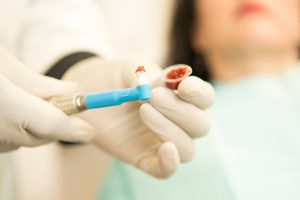
By Dr. Katherine Schrubbe, RDH, BS, MEd, PhD.
Compliance with CDC guidelines for reprocessing is vital to the safety of the dental staff and patients.
There seems to be a lot of buzz about dental handpieces these days. For whatever reason, the question of reprocessing these devices for patient use is once again a popular conversation in dental practices. Dental handpieces are medical devices accompanied by instructions for use (IFU). As discussed in a previous article, IFU are provided for medical devices and products in accordance with federal Food and Drug Administration (FDA) standards and provide information on cleaning, disinfection and sterilization of patient care items.1 In any dental setting, IFUs must be strictly followed to ensure patient safety, as well as peak performance of the devices. Whether the organization is a DSO, a large group practice or a solo practice, there must be a sufficient number of instruments to serve the patient schedules in order to avoid shortcuts in reprocessing.
Categories of patient care items
The Centers for Disease Control and Prevention sorts patient care items into three categories (referred to as the Spaulding classification), based on the potential risk for infection associated with their intended use: critical, semicritical or noncritical.2,3
Centers for Disease Control and Prevention. Guidelines for Infection Control in Dental Health-Care Settings – 2003. MMWR 2003;52(No. RR-17); 20.
At the ends of the spectrum are the critical and noncritical patient care items. According to the CDC, all critical items should be heat sterilized between patient use, as they have the greatest risk of transmitting infection. Noncritical items, which pose the least risk of disease transmission, should be cleaned and disinfected with an EPA-registered hospital disinfectant.2,4
In the middle of the spectrum are semicritical items. These items come in contact with mucous – or non-intact – membranes, but they do not penetrate soft tissue, contact bone, the bloodstream or other normally sterile tissues.2
Dental handpieces are considered semicritical items. The CDC states, “dental handpieces and associated attachments, including low-speed motors and reusable prophylaxis angles, should always be heat sterilized between patients and not high-level or surface disinfected. Although these devices are considered semicritical, studies have shown that their internal surfaces can become contaminated with patient materials during use. If these devices are not properly cleaned and heat sterilized, the next patient may be exposed to potentially infectious materials.”4,5,6
 In other words, there are no shortcuts to patient safety around handpieces, including low-speed motors use primarily for hygiene appointments. Eleven states require heat sterilization of dental handpieces: California, Florida, Indiana, Kansas, Missouri, New Mexico, Ohio, Oregon, South Carolina, Virginia, and Washington.7 And, the CDC guidelines fully apply in the remaining 39 states. Additional guidance from the CDC states, “handpieces and other intraoral devices that can be removed from the air and waterlines of dental units should be cleaned and heat-sterilized between patients. Follow the manufacturer’s instructions for cleaning, lubricating, and sterilizing these devices. These devices include high-speed, low-speed, electric, endodontic, and surgical handpieces, as well as all handpiece motors and attachments, such as reusable prophylaxis angles, nose cones, and contra-angles.”8
In other words, there are no shortcuts to patient safety around handpieces, including low-speed motors use primarily for hygiene appointments. Eleven states require heat sterilization of dental handpieces: California, Florida, Indiana, Kansas, Missouri, New Mexico, Ohio, Oregon, South Carolina, Virginia, and Washington.7 And, the CDC guidelines fully apply in the remaining 39 states. Additional guidance from the CDC states, “handpieces and other intraoral devices that can be removed from the air and waterlines of dental units should be cleaned and heat-sterilized between patients. Follow the manufacturer’s instructions for cleaning, lubricating, and sterilizing these devices. These devices include high-speed, low-speed, electric, endodontic, and surgical handpieces, as well as all handpiece motors and attachments, such as reusable prophylaxis angles, nose cones, and contra-angles.”8
There is continuous debate about CDC guidelines and recommendations: Do practices need to follow them, since they are just a guideline? The short answer is, yes. All practice settings should follow these guidelines. DSOs and large group practices generally have the infrastructure to carry out best practices and, as such, can serve as a model of compliance. Unlike OSHA, the CDC is not a governmental regulatory body. Nevertheless, it provides scientific evidence-based best practices for patient safety and reducing disease transmission, and the American Dental Association endorses all CDC guidelines for infection prevention in dental healthcare settings.6
CDC statement
On April 11, 2018, the CDC released the following update regarding reprocessing dental handpieces: “CDC recognizes that the dental community requires clear, consistent guidelines on the best way to reprocess dental handpiece devices between patient encounters. CDC guidelines for infection prevention and control state that, between patients, dental health care personnel (DHCP) should clean and heat-sterilize handpieces and other intraoral instruments that can be removed from the air and waterlines of dental units. This recommendation is based on studies that have shown that the internal components of air-driven dental handpieces (both low-speed and high-speed devices) can become contaminated with patient material during use, and this material can then be expelled into the mouth of other patients during subsequent uses. For handpieces and other intraoral instruments that can be removed from the air and waterlines of dental units, CDC continues to recommend that DHCP follow CDC guidelines to clean and heat sterilize.”9
The CDC goes on to say, “some handpieces are independent of air and waterlines (e.g., cordless devices). For these devices, CDC recommends that DHCP follow current FDA regulations, use FDA-cleared devices and follow the validated manufacturer’s IFU for reprocessing (cleaning, lubricating, and/or sterilizing) these devices.”9
The marketplace offers a variety of cordless, slow-speed motors with sterilizable outer sheaths that run on batteries and are fully compliant with CDC sterilization guidelines. Dental practices should evaluate their supply of handpieces and perform a cost analysis to determine the model type and amount of equipment they need.
It should be noted that in 2015, the FDA released updated guidance for reprocessing medical devices in healthcare settings. This guidance provides manufacturers of reusable medical devices with recommendations for writing and scientifically validating reprocessing instructions. Reusable devices that received FDA clearance before 2015 might not have reprocessing instructions that meet the requirements of the 2015 guidance.9,10
According to FDA, “reprocessing instructions for some older, legally-marketed, reusable devices may not be consistent with state-of-the-art science and therefore may not ensure that device is clean, disinfected, or sterile.” It is incumbent on the device manufacturer to provide sufficient instructions on how to prepare devices for use on the next patient.9,10 Both the CDC and FDA state that if a dental handpiece cannot be heat sterilized and does not have FDA clearance with validated instructions for reprocessing, DHCP should not use that device.2,4,10
The updated guidance from the CDC provides a 3-point summary:
- Clean and heat sterilize handpieces and other intraoral instruments that can be removed from the air lines and waterlines of dental units.
- For handpieces that do not attach to air lines and waterlines, use FDA-cleared devices and follow the validated manufacturer’s instructions for reprocessing these devices.
- If a dental handpiece cannot be heat sterilized and does not have FDA clearance with validated instructions for reprocessing, do not use that device.9
The guidance on reprocessing handpieces for all dental practice settings is clear. In order to be compliant with CDC recommendations, more than one handpiece is needed to ensure enough time for them to be heat sterilized between each patient. Saying it is too expensive to buy more than one handpiece is not an excuse the CDC is likely to entertain. A dental practice is a business, and to run a business there are costs. Purchasing equipment, such as handpieces, should be considered the cost of doing business.11 The size of the dental practice setting and its ability to comply to CDC guidelines for reprocessing and recommendations are vital to patient and staff safety.
References
- Schrubbe K. Instructions for use. Efficiency in Group Practice. Available at https://www.dentalgrouppractice.com/instructions-for-use.html. Accessed April 24, 2018.
- Centers for Disease Control and Prevention. Guidelines for Infection Control in Dental Health-Care Settings — 2003. MMWR 2003;52(No. RR-17); 20.
- Miller CH, Palenik CJ. Infection Control and Management of Hazardous Materials for the Dental Team. 5th ed. St. Louis: Mosby Elsevier; 2013; 122.
- Centers for Disease Control and Prevention. Summary of Infection Prevention Practices in Dental Settings: Basic Expectations for Safe Care. Atlanta, GA: US Department of Health and Human Services, Centers for Disease Control and Prevention, National Center for Chronic Disease Prevention and Health Promotion, Division of Oral Health, March 2016.
- Chin J.R., Miller C.H., Palenik, C.J. (2006). Internal contamination of air-driven low-speed handpieces and attached prophy angles. J Am Dent Assoc. 137(9):1275-80. Available at http://www.ncbi.nlm.nih.gov/pubmed/16946433. Accessed May 10, 2018.
- American Dental Association. Oral health topics; infection control. Available at https://www.ada.org/en/member-center/oral-health-topics/infection-control-resources. Accessed May 10, 2018.
- The Dental Student Network list of state licensing agencies. Available at http://www.studentdoctor.net/dental/state_boards.html. Accessed April 24, 2018.
- Centers for Disease Control and Prevention. Dental Handpieces and Other Devices Attached to Air and Waterlines. Available at https://www.cdc.gov/oralhealth/infectioncontrol/questions/dental-handpieces.html. Accessed May 10, 2018.
- Centers for Disease Control and Prevention. Statement on Reprocessing Dental Handpieces, April 11, 2018. Available at https://www.cdc.gov/oralhealth/infectioncontrol/statement-on-reprocessing-dental-handpieces.htm. Accessed May 10, 2018.
- US Department of Health and Human Services. Public Health Service Food and Drug
Administration. Reprocessing Medical Devices in Health Care Settings: Validation Methods and Labeling Guidance for Industry and Food and Drug Administration Staff. March 17, 2015. https://www.fda.gov/downloads/medicaldevices/deviceregulationandguidance/guidancedocuments/ucm253010.pdf. Accessed May 10, 2018.
- Vavrosky K. 5 infection control mistakes you may be making and not even realize. Dental Products Report, July 11, 2016. Available at http://www.dentalproductsreport.com/hygiene/article/5-infection-control-mistakes-you-may-be-making-and-not-even-realize?page=0,1. Accessed May 10, 2018.
Editor’s note: Dr. Katherine Schrubbe, RDH, BS, M.Ed, PhD, is an independent compliance consultant with expertise in OSHA, dental infection control, quality assurance and risk management. She is an invited speaker for continuing education and training programs for local and national dental organizations, schools of dentistry and private dental groups. She has held positions in corporate as well as academic dentistry and continues to contribute to the scientific literature. Dr. Schrubbe can be reached at [email protected].

